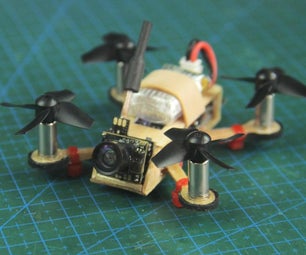Introduction: ESP8266 Slave Modbus TCP/IP No Libraries
A large number of devices have the TCP/IP modbus protocol becoming one of the most commonly used protocols at industrial level, this time we created a routine for ESP8266 as a slave Mobdus TCP/IP, we created this routine based on this Example Update ESP8266 Industrial Modbus TCP IP V2.0.
Industrial Integratios
Website http://trialcommand.com
Blog English : http://en.trialcommand.com
Blog Español: http://en.trialcommand.com
Complete Post http://en.trialcommand.com/blog/esp8266-slave-modbus-tcpip-no-libraries/
Articulo completo http://es.trialcommand.com/blog/esp8266-esclavo-mo...
Step 1: Test
TEST
The following addresses have been configured in the ESP8266 module:
- 10 Holding Read Registers for display on the ESP8266 serial terminal.
- 10 Holding Writing Registers in which we will send Random values to validate the changes in the Modbus Master (Simulator).
Additionally from Holding register [14] we will activate the 14 - pin GPIO (D5)
Models that support Modbus TCP application
Materials and where to buy them cheap
Step 2: Video: ESP8266 Slave Modbus TCP/IP, Without Additional Libraries
Video: ESP8266 Slave Modbus TCP/IP, Without additional libraries
Step 3: Conclusions & Recommendations
Conclusions
We have tested this library for several hours and consider that implementing the esp8266 with more robust hardware, could be used in monitoring and control applications of Controllers. PAC, PLC, OPC, SCADA and Node-RED.
Recommendations
Verify that adding delay or libraries with delay's do not affect the communication between Master and slave since a continuous communication must be maintained and the master's timeout could determine the communication as failed.
Step 4: No Additional Libraries
No additional libraries
We performed numerous tests of the modbus library which used the Tinker library, with the result that certain applications that use delay's affect communication, in that case we take the library and select the connection routines, master frame reading, frame creation, Reading and writing functions. This routine created in Arduino IDE for ESP8266 performs master - slave communication without adding extra libraries, since the communication is done step by step.
More Tutorials and downloads Industrial Integratios
Website http://trialcommand.com
Blog English : http://en.trialcommand.com
Blog Español: http://es.trialcommand.com
Complete Post http://en.trialcommand.com/blog/esp8266-slave-mod...
Articulo completo http://es.trialcommand.com/blog/esp8266-esclavo-m...













